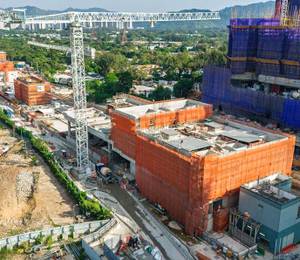Tunnelling works for the second phase of the Deep Tunnel Sewerage System (DTSS) in Singapore were recently completed. The final breakthrough took place in July 2023. Here, a total of 19 Herrenknecht tunnel boring machines (TBMs) had been deployed since 2019. In addition, a Herrenknecht vertical shaft sinking machine (VSM) was used.
Singapore’s National Water Agency, PUB, is implementing the DTSS project in two phases. Phase 1 (DTSS1) was completed in 2008, where five Herrenknecht TBMs excavated 28 km of the 108-km-long network of main tunnel and link sewers. Phase 2 (DTSS2) is currently underway, extending the system by nearly 100 km, of which around 49 km were excavated by Herrenknecht TBMs. The project is expected to be completed in 2026.
The 19 Herrenknecht TBMs in Phase 2 comprised 18 Mixshields and one EPB shield (earth pressure balance shield), featuring diameters of 4.50-7.56 m. Herrenknecht also supplied 12 separation plants for the Mixshield drives and provided comprehensive support services throughout the entire project. This included, for example, remote access to individual machines, enabling them to be monitored and controlled remotely.
According to Herrenknecht, among the challenges on the project was the complex geology. For instance, the Jurong formation consists of sandstone, siltstone, mudstone, limestone, dolomite and some conglomerate, which are extremely folded due to tectonic plate movements. As a result, diverse rock types with different weathering grades often alternate along a tunnel alignment and even in the cross section of a tunnel. “In close cooperation with the customers, we therefore adapted the design of the TBM to the complex geological conditions,” said Dirk Schrader, Herrenknecht’s general manager for Asia Pacific.
What’s more, special solutions were required for construction of five of the 24 shafts in the tunnel contract T-11 with diameters of between 10 and 12 m. In this particular section, with depths of up to 60 m there was high water pressure that the shafts constantly had to withstand. “For this reason, for the first time in the Asia Pacific region, a vertical shaft sinking machine (VSM) from Herrenknecht was used for sinking the shafts,” said Mr Schrader.














